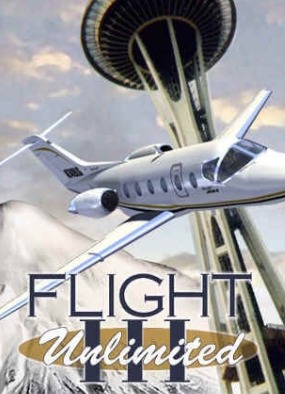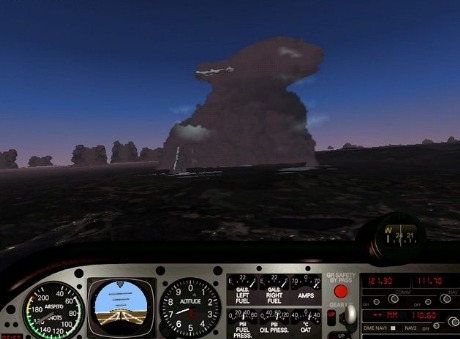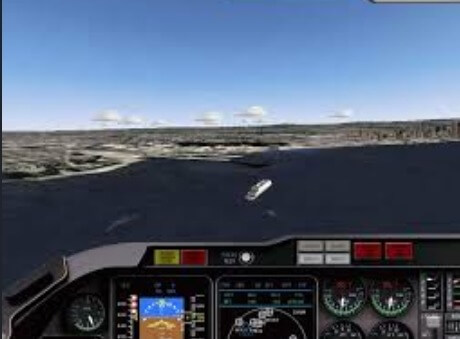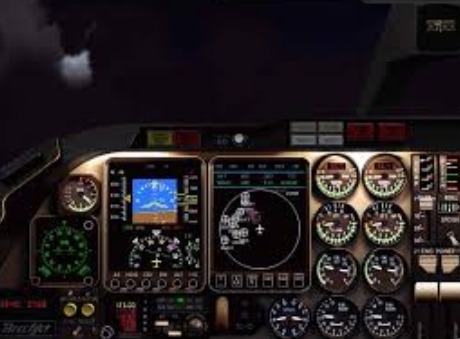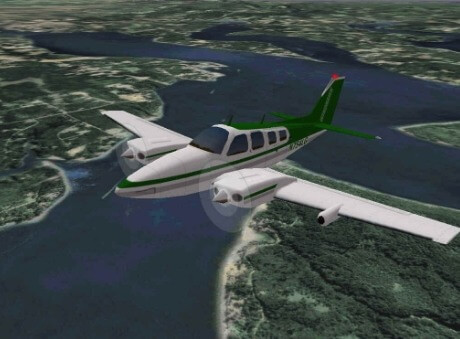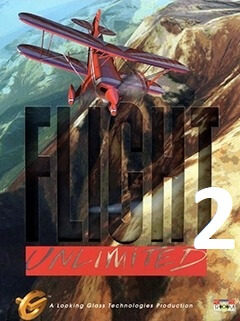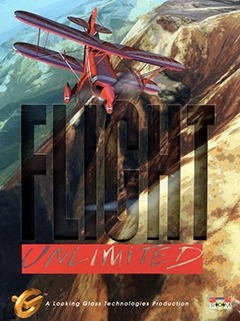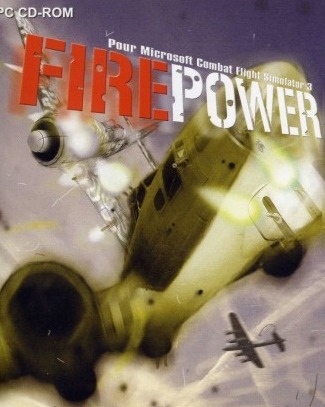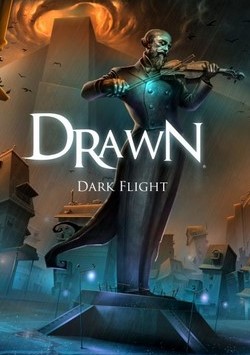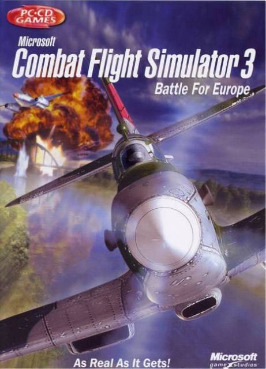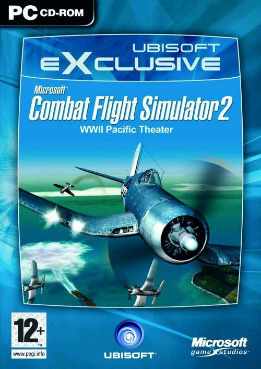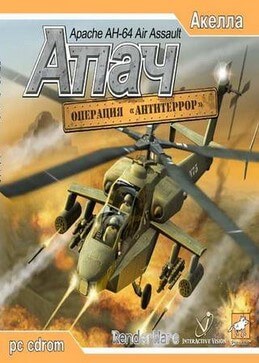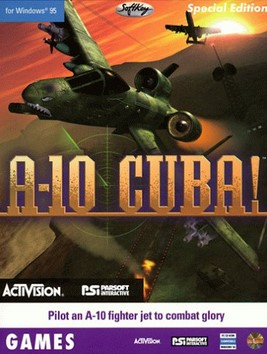Flight Unlimited III is a 1999 flight simulator video game developed by Looking Glass Studios and published by Electronic Arts. It allows players to pilot simulations of real-world commercial and civilian aircraft in and around Seattle, Washington. Players can fly freely or engage in "Challenge" missions, such as thwarting a theft or locating Bigfoot. The development team built on the general aviation gameplay of Flight Unlimited II, with more detailed physics and terrain, more planes, and a real-time weather system. Roughly half of Flight Unlimited II's team returned to work on the sequel, supported by new hires.
Lead designer Peter James described Flight Unlimited III's development as a struggle, thanks to a lack of interest from Electronic Arts and from Looking Glass's management. Placed in direct competition with Microsoft Flight Simulator 2000 and Fly!, the game failed to capture sufficient market share. It became one of Looking Glass's biggest commercial flops, with roughly 20,000 units sold in the United States during 1999. This contributed to the company's closure in 2000. The game was well received by critics, who praised its terrain rendering and dynamic weather. Its simulated physics were lauded by several reviewers, but others felt that the physics were imprecise and that the game's system requirements were extremely high.
Gameplay
Flight Unlimited III is a three-dimensional (3D) flight simulator video game, in which the player pilots virtual reproductions of real-world planes. Players may control ten aircraft: the Lake Turbo Renegade, Stemme S10, Mooney Bravo, Fokker Dr.I, Beechjet 400A, and five planes first included in Flight Unlimited II. Plane cockpits feature simulated flight instruments such as variometers and primary flight displays, and allow for both visual and instrument navigation. The main airspace is 10,000 square miles of Seattle terrain; eight other Western American states are modeled as well, albeit in less detail. The California scenery from Flight Unlimited II may be imported to expand the airspace. The player shares the game's skies with artificially intelligent (AI) planes. Real-time, interactive air traffic control monitors the player's actions and tries to prevent mid-air collisions. Before a flight, the player may select which types of weather to encounter. Weather conditions such as cold fronts and thunderstorms develop in real-time.
In addition to the default "Quick Flight" mode, the player may play tutorial and "Challenge" missions. The game's tutorial mode features 26 lessons, which demonstrate basic and advanced flying techniques and then allow the player to perform them. Challenge missions test the player's flying ability with objectives such as locating Bigfoot, rescuing a stranded hiker, stopping a theft, or flying through hoops. Eleven Challenges are available, but the player may create more or download them from the Internet. Flight Unlimited III includes the level editor ("FLED") used to develop the game, which allows players to use the game's assets to create airports, AI flight paths, and edited landscapes. Players may share their creations online.
Development
Following the release of Flight Unlimited II in 1997, certain members of that game's team wanted to move on to Flight Unlimited III, while others wanted to create the combat flight simulator game Flight Combat. Looking Glass Studios chose to develop the games simultaneously: the team was split into two, both supplemented with new hires. The company then surveyed customers to determine where Flight Unlimited III should take place, among other things. In May 1998, Electronic Arts was announced as the game's publisher, as part of a multi-title marketing and distribution deal that also included System Shock 2. Looking Glass's goal was to build on the foundation of Flight Unlimited II and to provide what project leader Tom Sperry called "the true joy and sensation of flight in the most realistic environment available". The company first displayed Flight Unlimited III at the MicroWINGS Conference in August 1998. At the show, the game was revealed to take place in and around Seattle—a choice based on fan requests and on the varied landscape and weather of Puget Sound. Looking Glass also discussed new planes, moving objects on the ground, and a real-time, physics-based weather system.
Former flight instructor Peter James, who had worked on Flight Unlimited II, assumed the role of lead designer. He was largely responsible for Flight Unlimited III's lessons, planes, and simulated flight instruments. James believed that other flight simulators had holes with regard to realism, and he hoped to create a more accurate experience. Photographs were captured of each plane's real-world counterpart, and construction of the 3D plane models was led by artist Duncan Hsu, a former car modeler at Papyrus Design Group. The flight physics were coded by Kevin Wasserman and involve real-time calculations of force vectors, such as those acting against a plane's yaw, pitch, and roll. This system was more advanced than that of Flight Unlimited II, which was also based on force calculations. The physics code was informed by "real aircraft data" and the personal experience of pilots, and each of the planes was flown as research for the game. Because the plane cockpits of previous Flight Unlimited games had been criticized by pilots, the team tried to make Flight Unlimited III's cockpits extremely authentic. Kemal Amarasingham recorded the planes' sound effects, which he said involved "risking his life" by standing near jet engines and underwings.
The game's terrain texture maps were made with satellite images rendered at four square meters per pixel, the highest resolution used in a flight simulator at that time. Artist Karen Wolff designed the terrain by combining large topographic maps into a "mosaic", which recreated the elevations and depressions of the Seattle area. The satellite imagery was layered over the resultant polygonal mesh. Real elevation data was also used for the eight lower-resolution Western American states outside of the Seattle area. Budget concerns and the storage limitations of the CD-ROM format prevented the team from rendering the entire United States, despite fan demand. The 3D objects that move across the terrain were created by Yoosun Cho, who used numerous photography books for inspiration. Flight Unlimited III's object editor let her set these objects to "move once along the path, back and forth or cycle". The weather system, co-designed by James, generates, moves, and disperses weather fronts based on real-time calculations of atmospheric conditions such as humidity and orographic lift.
